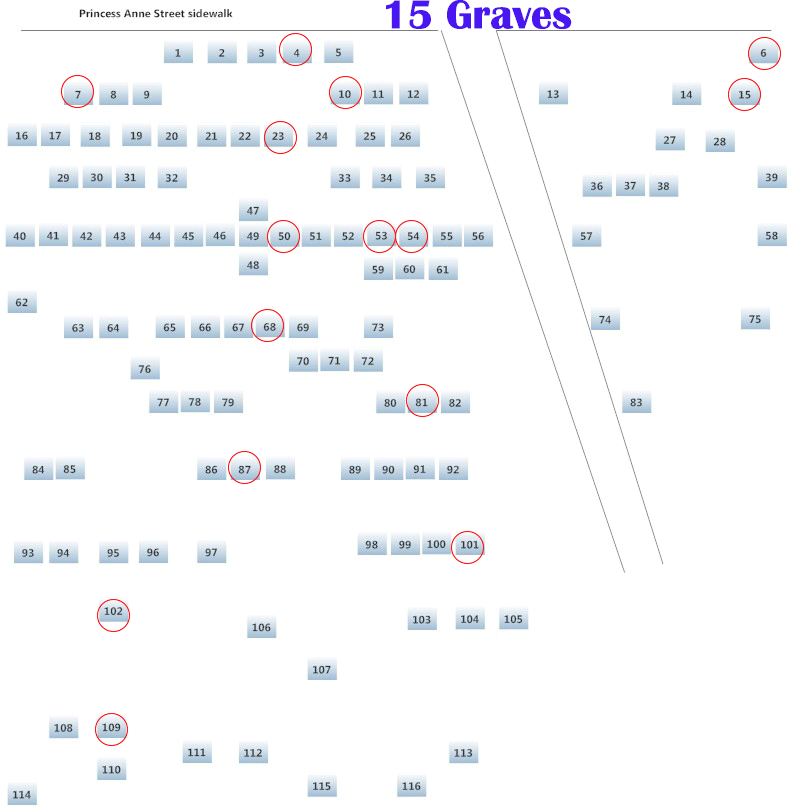
#4 George Richardson 1762-1807
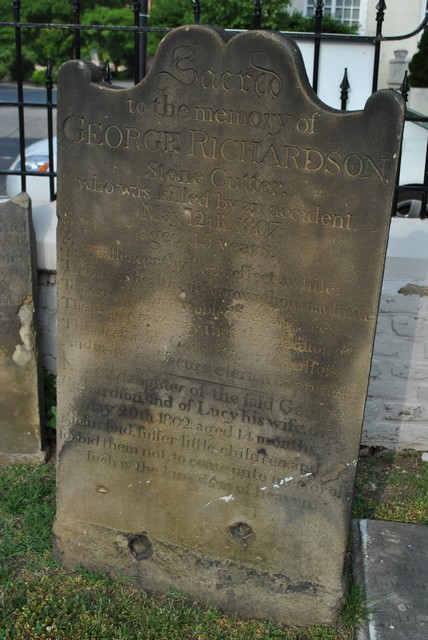
Richardson, an African American, was employed in repairing well for B. Botts Esq and part of the stone work of the well gave way and buried him from 15-20 feet
#6 Archibald McPherson 1705-1754
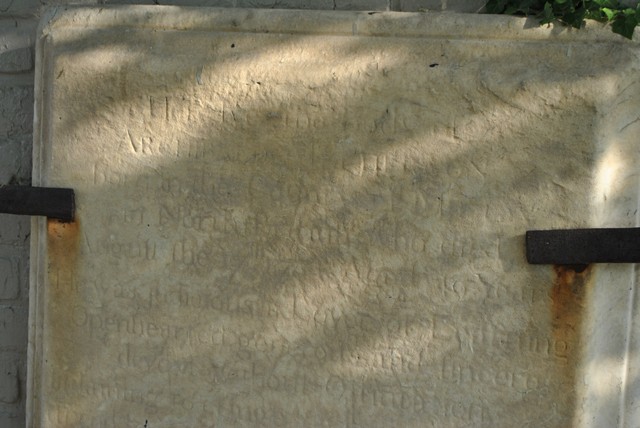
Archibald McPherson was born in 1715 in the Northern part of England. He came to this country in early manhood and settled in Spotsylvania county. He was a gentleman of education, refinement and wealth, and a friend to the poor and needy.
Mr. McPherson created a fund in 1795 for the benefit of the Episcopal Charity School of Fredericksburg. This fund was to be held in trust by the Mayor and Common Council of the town. Afterwards by an act of the Legislature six trustees were appointed annually. The school was kept in the building on the north side of Hanover street just below the Masonic Hall. This building is now used as a storage room for a merchant of Fredericksburg. Tradition has it that George Washington visited this school and talked to the children on one of his visits here.
Mr. McPherson was interred in the burial ground of St. George’s church and a marble slab erected over his grave, which is now secured to the wall of the Mission House, at the west end of the lot on Princess Ann street. On that slab is the following inscription:
“Here lies the body of Archibald MePherson, born in the county of Murray, in North Britain, who died August 17, 1754, aged 49 years. He was judicious, a lover of learning, open hearted, generous and sincere. Devout, without ostentation; disdaining to cringe to vice in any station. Friend to good men, an affectionate husband.
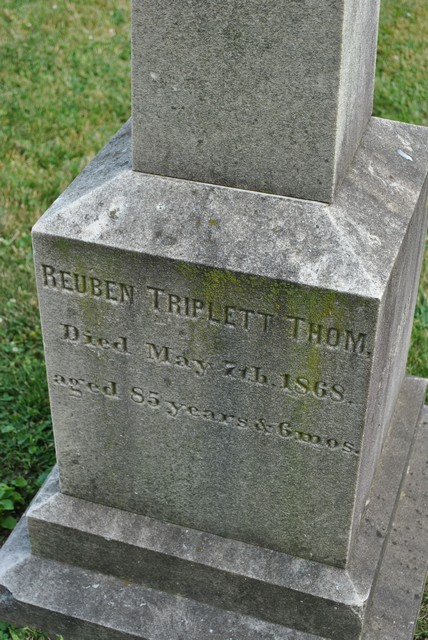
Reuben Thom was on the Vestry for 52 years and is the longest serving Vestry member in our history. Remarkably, he was senior warden for 40 of those 52 years. (Vestry rotation did not begin until 1946). Like McGuire he is buried in St. George’s Cemetery though not originally. His grave was moved there in 1932 and was one of the last burials. As they faced each other in life, so too in death.
Thom worked as a postman and lived on Caroline Street in an 1822 home between George and William Streets, current occupied by the Salem Shops. (See map on left from the Park Service showing businesses and homes around St. George?s during the Civil War). He also owned a warehouse on the river (the stone warehouse today). The post office was on the first floor and he resided on the second.
Thom died in May, 1868 at the age of 82. As the Fredericksburg Ledger wrote: “We have never known a man of more sterling honesty, more transparent truth or cooler courage. His remarkable life spanned the early American Republic, the Jacksonian years and the years prior to the Civil War as well as the War and the beginning years of Reconstruction. 52 of those years was given to service to St. George?s and with Rev McGuire served all three St. George’s Church buildings. Not surprisingly, according to his obituary, among his last utterances were fervent prayers for the prosperity of the Church.
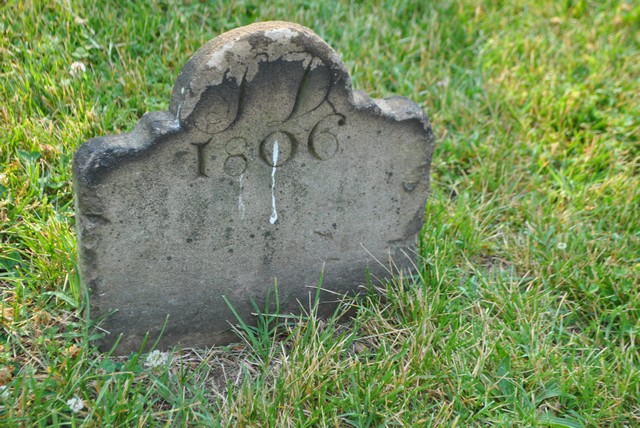
He lived only 3 months in 1806 but his grave is one of the most defining in the graveyard. Son of James and Rebecca Duffel. James Duffel was a
silversmith and Revolutionary War Soldier and buried in Lynchburg. He was merchant in Fredericksburg, advertising watches, silver, plated ware, jewelry, and guns.
In 1810 he bought Lot 13 in Lynchburg and in 1811, Lot 6, as well as some additional land in the city. He was member of the Lynchburg City Council and in 1814 a director of the Exchange Bank of Virginia. His brother, Edward, had gone to Lynchburg, and here James followed him. The wives of these two brothers were sisters.

Col. James Duncanson came to VA from Forres, Moray, Scotland in the 1750’s. He emigrated to Fredericksburg to go into business with his brother, Robert and was a merchant. In 1756 he joined the Virginia Militia and served until 1761 under Washington in the French and Indian War. Colonel Duncanson served under Washington in the Braddock Expedition in 1755, and was wounded in the throat so that he ever after spoke in a whisper. In 1758, he participated in the Forbes expedition to Fort Duquesne (Pittsburgh). Thus, he is our only French and Indian War veteran.
He also served in the local Committees of Correspondence in 1774 during the struggles over the port of Boston. He participated in the Revolution, and was one of the wealthiest men in this part of Virginia.
He constructed the large brick mansion on his plantation in Culpeper County which was so long owned by his descendants, and which after the Civil War passed to the Barbours. It was known as “Clover Hill.”
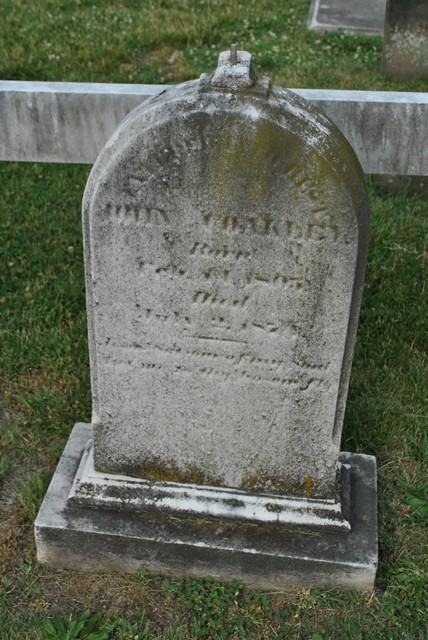
When he died he was one of the oldest merchants in Fredericksburg selling books as early as 1830, queensware, leather and dry goods.
He was a member of the Vestry in 1839 to 1865 (resigning that year) and then 1869-1874 until his death. He was senior warden in 1865
He was involved in many community activities. He was also VP of the Fredericksburg Bible Society. He was also involved in the Mary Washington Monument Committee and served as a bank director in 1855 as well as member of an insurance company in the same year and superintendent of the Fredericksburg Aqueduct Company at the time of the Civil War.
During the Civil War in 1852 he was one of 19 arrested by the Federals in August and confined in Old Capital Prison until September. Included in that list was Thomas Knox, Thomas Barton, John F. Scott of St. George’s. They were arrested in retaliation for the Confederate imprisonment of seven federals for disloyalty and were confined in prison in Richmond. 6 of the 19 were members of St. George’s which had the most members of any Church from those arrested: 1. Thomas Knox 2. John Coakley 3. Dr. James Cooke 4. John F. Scott 5. Montgomery Slaughter 6. Thomas B. Barton. Two others John Berrey and George H. C. Rowe kept diaries which are valuable. They were sent to Old Capitol Prison in Washington by boat. This prison was neither an Andersonville nor a minimum security facility. Sanitary conditions were no worse than other prisons of the time but the prisoners were bothered by lice and bed-bugs and bad smelling food. Generally the relations were courteous and some of the rules bent such as being able for the 19 to meet together . The diaries note lots of wine drunk and many practical jokes played on each other that allowed them to keep their spirits high. As Rowe notes, he saw John Coakley once “wore a handkerchief pinned around his waist, in short sleeves and slippers, the very picture of a quarrelsome old maid” They even met up with famed spy Belle Boyd.
#50 Thomas Goodwin (1770-1836)
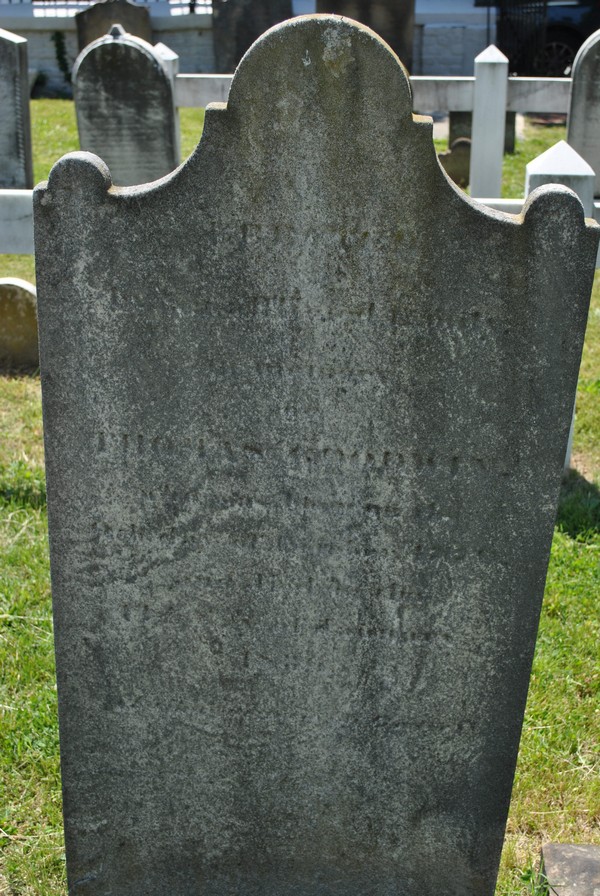
Thomas Goodwin was the son of Peter Goodwin & Sarah Hawes (Coghill) Goodwin.He was born 9 Oct 1770 at “Oakley”, Caroline Co., Va
He was a merchant and was Mayor of Fredericksburg from February 12, 1829 to January 16, 1836. He died at the age of 65. His
wife and children are resting by his side. Records indicate that Mr. Goodwin also operated a hotel called the Rappahannock House on the east side of Main Street, between George and Hanover Streets. In later years the name of the hotel was changed to the Shakespeare and was destroyed by fire in 1866-1867.
#53 Anna Marie Goodwin (1775-1849)
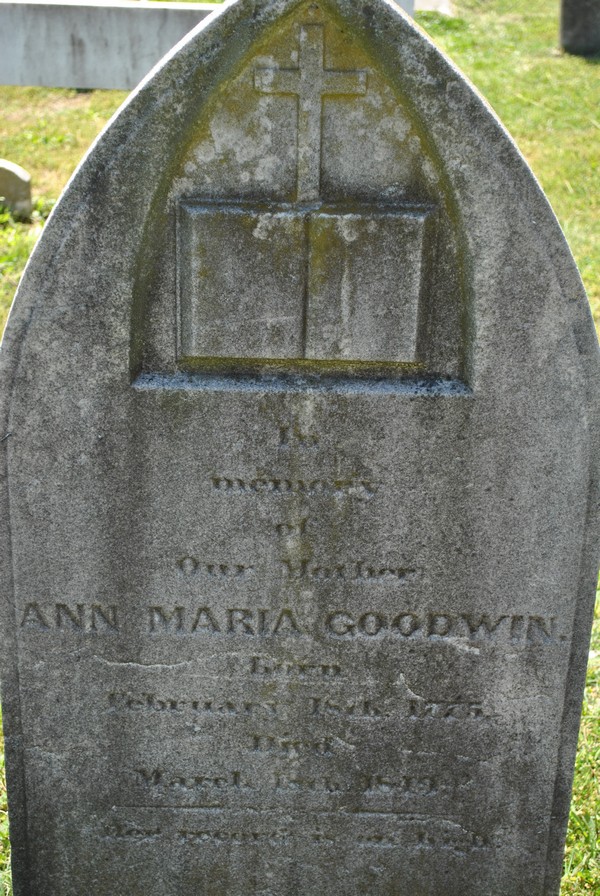
She was a Smith, daughter of William Smith (1746-1802) and Mary (1750-1822) his wife, also buried at St. George’s and revolutionary war veteran.
She was president of the Female Charity School. It was created by St. George’s in 1802 and supported by citizen contributions. In 1808 Miss Sophia Carter of Berea in Prince William County left $10,000 for the benefit of poor females in Fredericksburg. The Virginia State Legislature incorporated it at that point
The Female Charity School exists to this day and the building still stands at 1119 Caroline Street at the corner of Lewis Street though they no longer occupy it. In 1860 governesses Elizabeth and Mary Vass oversaw 18 resident girls in 1860. Its male counterpart, located in the 200 block of Hanover Street, had by 1858 run on hard times. Its assets would be transferred to the Female Charity School after the war.
Her spouse Thomas Goodwin (1770 – 1836) is also buried at St. George’s. Thomas was a merchant and operated a hotel called the Rappahannock House on the east side of Main Street, between George and Hanover Streets. He was on a committee of subscribers of Mary Washington Memorial and fought an effort to have her remains placed at the Presbyterian Church.
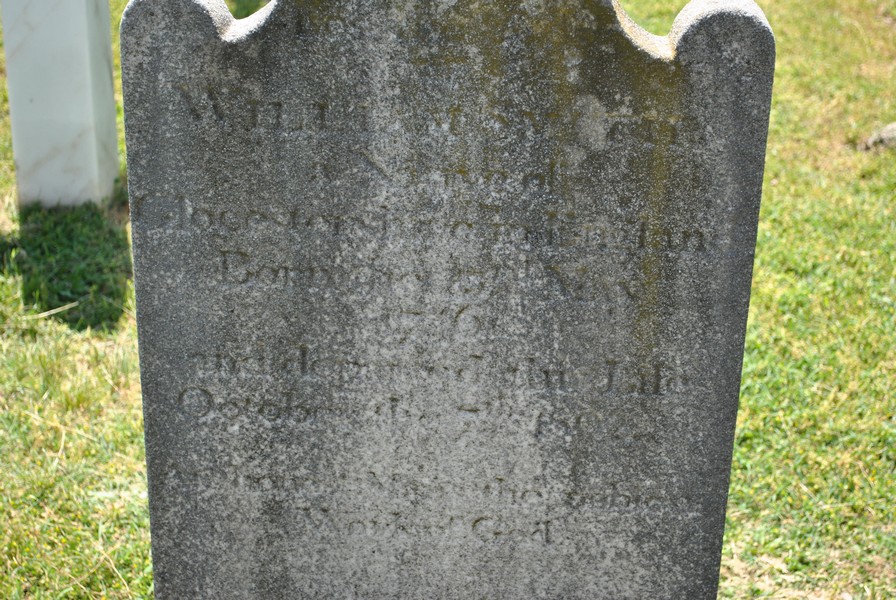
He was a trustee in 1799 and served on Vestry 1799-1802 until his death. He was cited by the Vestry in 1788 as a trustee for helping to repair the church. He was a dry goods merchant and a postmaster of Fredericksburg. His obituary added that he was gentlemen much admired.
During the Revolution. He served Virginia.on the Committee for Articles of Confederation 1774. During the war he gave beef to the cause and use of a stable.
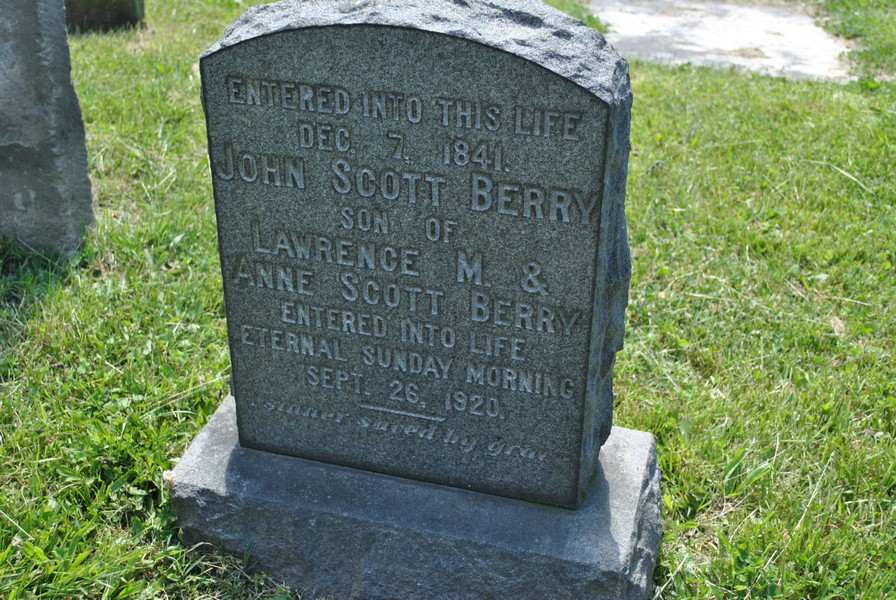
Berry was born in the Scotia building on Charles Street. At his death Berry was actually a vestryman of Trinity Episcopal and only was buried here because his family bought a plot. During th Civil War he served in the Fredericksburg Artillery in Braxton’s battery. Badly wounded in battle of Fredericksburg, he transferred to Adjutant General in Richmond and served with Judged William S. Barton. He also served 35 years as deputy clerk of the Corporation Court of Fredericksburg under Robert S. Chew (Chew family served as clerks for 99 years).

Barton purchased Fielding Lewis estate, today Kenmore 1799 and brought 5 children to live them. Originally from RI and served in the Revolution War army and afterwards became a successful shipping merchant in Baltimore.
In 1802 tried his “immediate grounds as a subdivision”, including the mansion itself
In 1812 he helped develop Liberty town at the intersection of Barton and Liberty Street.
Then he was involved a 3rd subdivision at the intersection Hanover and Kirkland Streets, including both sides of Hanover Street extended, and included the 10 acre tract which became the Brompton estate
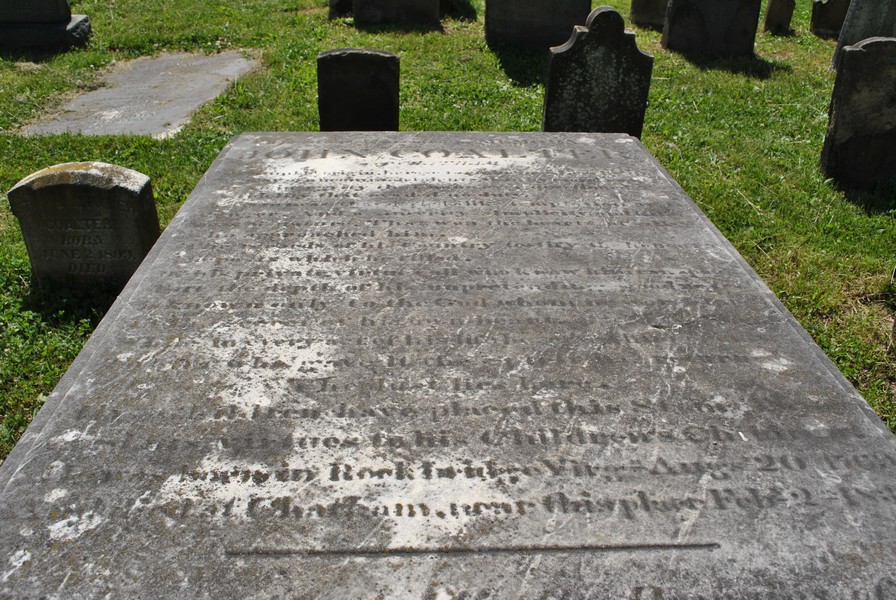
John Coalter (August 20, 1771 – February 2, 1838) was born in Rockbridge County, Virginia. He was a tutor in the family of Judge St. George Tucker in Williamsburg and studied law at the College of William and Mary in 1789. After graduation he settled in Staunton, Virginia and practiced law there. After being Commonwealth’s Attorney for several years, he was appointed to the General District court for Staunton in 1809. On May 11, 1811, he was appointed to the Supreme Court of Appeals of Virginia. He owned Chatham Manor near Fredericksburg, Virginia.[1] About 1821, he moved to Richmond, Virginia where he lived until his death on February 2, 1838.
Coalter died in Richmond and was buried at Chatham Manor, but his remains were later moved across the Rappahannock River to the cemetery of St. George’s Church in Fredericksburg.His and his last father-in-law’s demise led to legal complications, as his widow Hannah Coalter wanted to free the slaves she inherited, which was not permitted at the time, although was permitted in a will, which she had drafted and redrafted by acclaimed lawyers before she died in 1857.
#101 Catherine Maury (1755-1794)
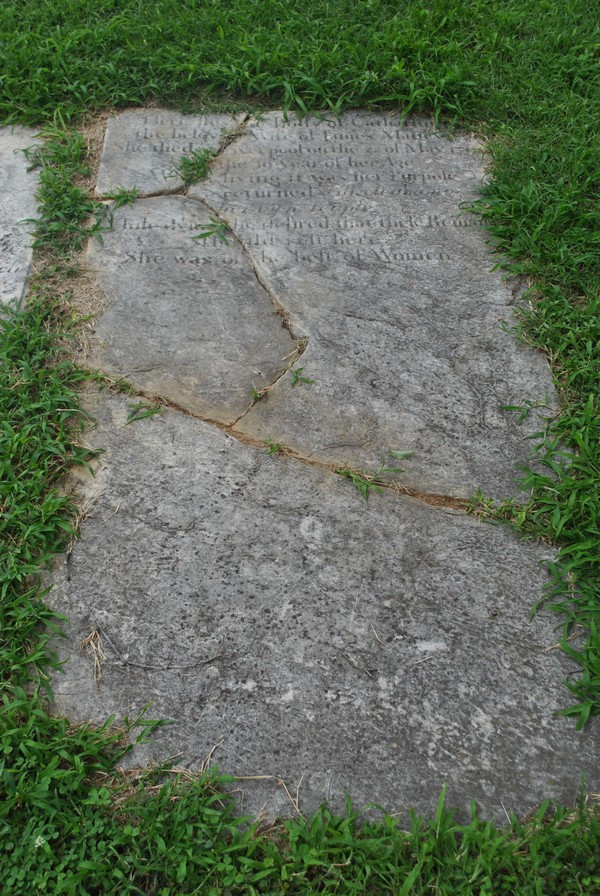
James Maury (3 Feb 1746 – 23 Feb 1840) was one of the first United States diplomats and one of the first American consuls appointed overseas. In 1790 he was appointed to the Consulate of the United States in Liverpool one of the first overseas consulates founded by the then fledgling United States of America. Maury held the position of consul for 39 years until he was removed from office by President Andrew Jackson in 1829.
Catherine was his first wife. She was daughter of Robert Armistead of Elk Creek Louisa. She died in Liverpool on the 22nd of May 1794 at age 39 but desired to buried back in the US. They had one daughter.
#102 George Rothrock (1798-1865)
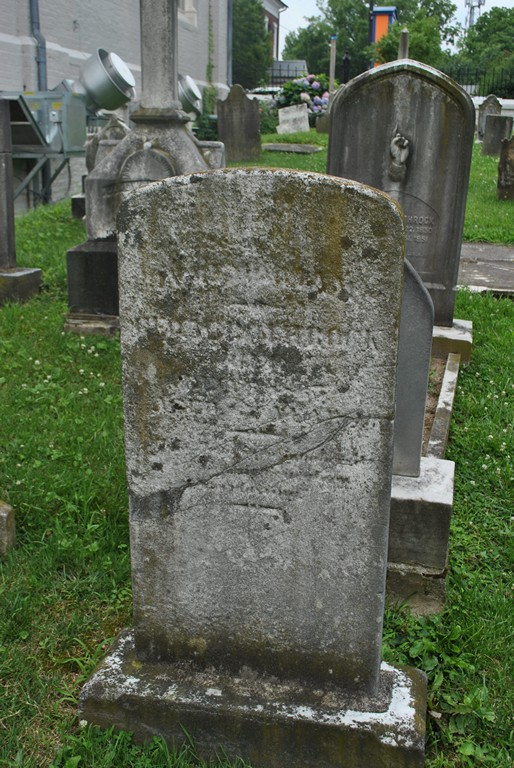
George Rothrock and Son were in the hardware business as of 1825 and fabricated various items – Blacksmith tiles. Brass candlesticks and general assortment of copper and tin wire. He also served on the Vestry beginning in 1824. He gave the Eagle stand on the left side of the chancel in memory of his parents George W Rothrock and Louisiana J. Rothrock
He also served as nuisance inspector. For each of the 6 wards the inspector all the lots in the requisite wards and report any nuisances to the Police office.
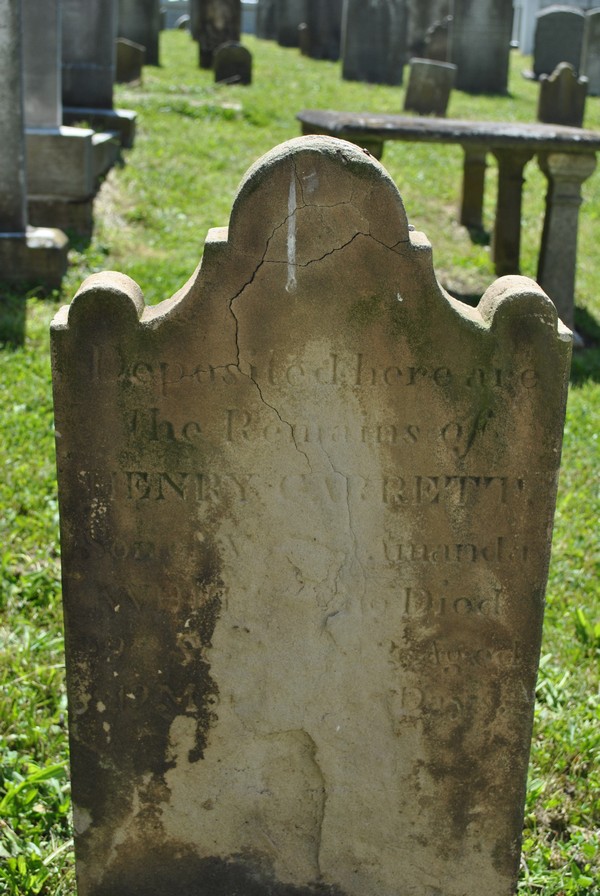
In 1849, Mr. William H. White was one of the prominent citizens of Fredericksburg. He was on the committee appointed for the purpose of examine and report to the court, the court composing of the following gentlemen: MayorSemple, Justices William H. White and Peter Goolrick, some plan for the enlargement and repairs or rebuilding of the courthouse of Fredericksburg.
The grave is of his son Henry Garrettwho died 19 September, 1822. Aged 10 months and 11 days.
The elder White was a watch maker with his “Sign of the Golden Watch”. He was a watch maker. Advertised fine gold chains, seals and keys, ear rings, finger rings “all of which are the latest fashion. Received patent lever and plain watches, silver and steel specialties, silver calendar pencil cases, thimbles, coral beads, watch ribbons and beautiful assortment of steel chain.